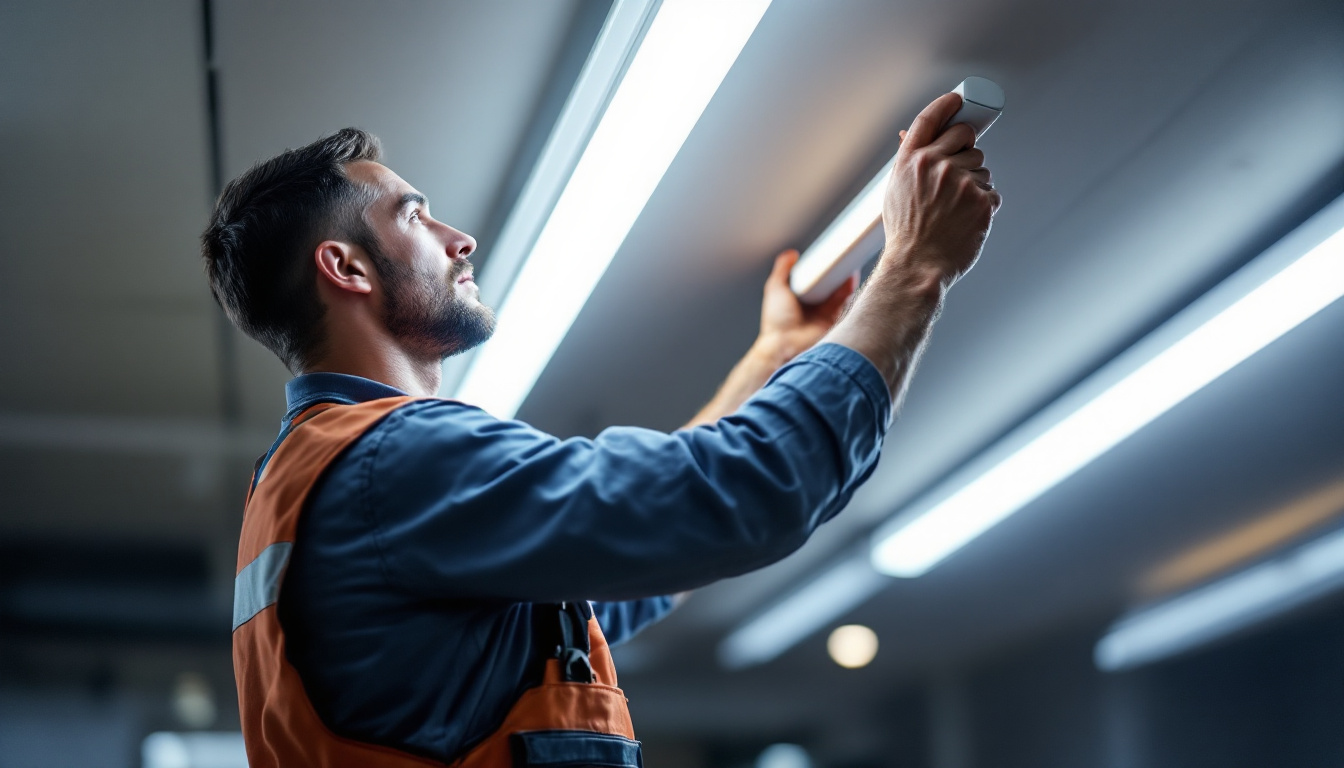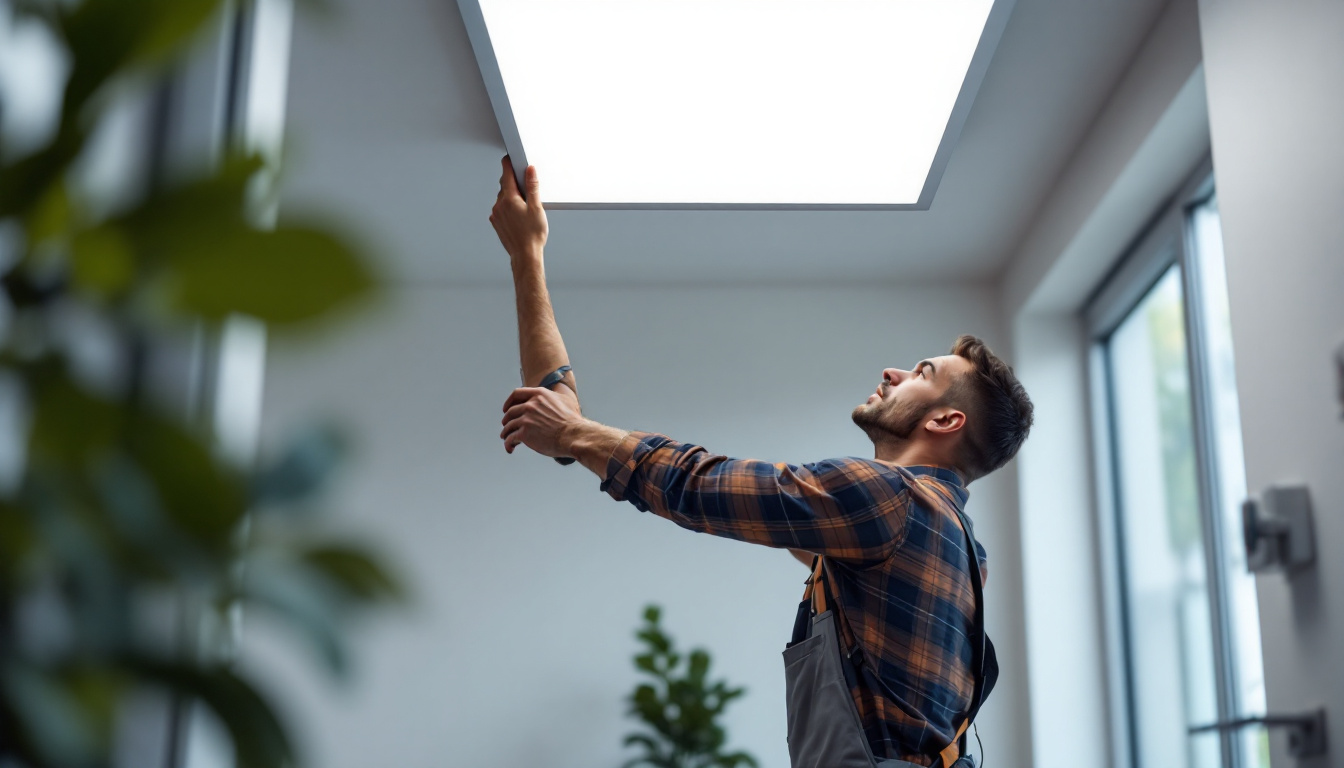
As the world becomes increasingly reliant on technology and digital learning, the importance of effective study environments cannot be overstated. Lighting plays a crucial role in creating spaces that enhance focus, reduce eye strain, and promote productivity. For lighting contractors, understanding the nuances of lighting design for study areas is essential. This article delves into the best lighting practices for studying, providing valuable insights that can help contractors deliver optimal solutions to their clients.
Proper lighting is fundamental in any study environment. It not only affects visibility but also influences mood, concentration, and overall learning effectiveness. Poor lighting can lead to fatigue and decreased productivity, while well-designed lighting can enhance focus and retention. The psychological effects of lighting are profound; studies have shown that students exposed to natural light tend to perform better academically compared to those in dimly lit or artificial environments. This highlights the need for thoughtful consideration of lighting in spaces where learning occurs.
Research indicates that the right lighting conditions can improve cognitive performance. This is particularly relevant for students and professionals who spend long hours reading, writing, or engaging in other study-related activities. Therefore, understanding the specific lighting needs of study areas is vital for contractors aiming to create effective learning environments. Furthermore, incorporating adjustable lighting options can empower users to modify their surroundings according to their tasks, thereby optimizing their study sessions and enhancing their overall experience.
There are various types of lighting that can be utilized in study environments, each serving different purposes. Ambient lighting provides overall illumination, while task lighting focuses on specific areas where activities such as reading or writing take place. Accent lighting can also be used to highlight certain features within a study space, such as artwork or bookshelves, adding an aesthetic appeal that can make the environment more inviting and inspiring.
Contractors should consider the balance between these lighting types to create a well-lit environment. For instance, a combination of ambient and task lighting can help ensure that the entire space is adequately illuminated while also providing focused light where it is most needed. Additionally, the use of dimmable fixtures allows for flexibility, enabling users to adjust the brightness based on the time of day or the specific activity they are engaged in, which can further enhance comfort and productivity during study sessions.
The color temperature of light is another critical factor in study environments. Measured in Kelvin (K), color temperature can range from warm (below 3000K) to cool (above 5000K). Warmer light tends to create a cozy atmosphere, while cooler light is associated with alertness and focus. The psychological implications of color temperature are significant; cooler lights can stimulate mental activity, making them ideal for tasks requiring high concentration, such as studying for exams or working on complex projects.
For studying, a color temperature between 4000K and 5000K is often recommended. This range mimics natural daylight, which can help maintain alertness and improve concentration. Contractors should educate clients on the benefits of selecting the right color temperature for their study spaces. Moreover, integrating smart lighting solutions that can adjust color temperature throughout the day can simulate the natural progression of sunlight, further supporting the body’s circadian rhythms and enhancing overall well-being during study hours.
Creating an ideal study environment involves more than just selecting the right fixtures. It requires a comprehensive approach that considers the layout, furniture, and overall aesthetics of the space. Lighting contractors play a vital role in this process, providing insights that can enhance the functionality and appeal of study areas.
The layout of a study space significantly impacts how lighting is perceived and utilized. Natural light should be maximized whenever possible, as it provides the best quality light for studying. Positioning desks near windows can enhance exposure to daylight, reducing the need for artificial lighting during the day.
However, it is essential to consider glare and shadows when designing the layout. Task lighting should be strategically placed to avoid casting shadows on work surfaces. Additionally, adjustable fixtures can provide flexibility, allowing users to modify the lighting according to their preferences.
Incorporating elements such as plants or artwork can further enhance the study environment. Plants not only improve air quality but also create a calming atmosphere that can boost concentration and productivity. Artwork, particularly pieces that inspire or motivate, can add a personal touch to the space, making it feel more inviting and conducive to learning.
Furniture selection can also influence lighting design. Desks with built-in lighting or adjustable lamps can provide targeted illumination for studying. When recommending furniture, contractors should consider how lighting interacts with different materials and finishes, as these can affect light diffusion and reflection.
Moreover, the height of furniture should be taken into account. For instance, taller desks may require higher-mounted fixtures to ensure adequate illumination without causing discomfort or strain.
Additionally, the arrangement of bookshelves and storage units can play a crucial role in the overall lighting scheme. Open shelving can allow light to flow throughout the space, while closed cabinetry may necessitate additional lighting solutions to ensure that every corner of the study area is well-lit. Thoughtful placement of these elements can create a harmonious balance between functionality and aesthetics, ensuring that the study space remains organized and visually appealing.
In today’s environmentally conscious society, energy efficiency and sustainability are critical considerations for lighting contractors. The integration of energy-efficient lighting solutions not only reduces operational costs but also aligns with the growing demand for sustainable practices.
LED lighting has emerged as a leading choice for study environments due to its energy efficiency, longevity, and versatility. Unlike traditional incandescent bulbs, LEDs consume significantly less energy and have a longer lifespan, making them a cost-effective option in the long run.
Moreover, LED technology allows for a variety of color temperatures and dimming options, providing flexibility in lighting design. Contractors should advocate for LED solutions to clients, highlighting the benefits of reduced energy consumption and lower maintenance costs.
Smart lighting systems are becoming increasingly popular in residential and commercial settings. These systems allow users to control lighting through mobile devices or voice commands, providing convenience and customization.
In study environments, smart lighting can enhance the user experience by enabling individuals to adjust the intensity and color temperature according to their needs. Contractors should explore opportunities to integrate smart technology into their lighting designs, offering clients innovative solutions that improve functionality.
Lighting contractors often encounter challenges when designing lighting solutions for study environments. Understanding these challenges and providing effective solutions is crucial for delivering successful projects.
Glare is a common issue in study spaces, particularly when natural light is involved. It can cause discomfort and distraction, hindering the ability to focus. To mitigate glare, contractors should recommend window treatments such as blinds or shades that can diffuse light without completely blocking it.
Additionally, the placement of fixtures should be carefully considered to avoid direct glare from overhead lighting. Using fixtures with diffusers can help soften the light and create a more comfortable environment for studying.
Another challenge is achieving a balance between different light levels in a study space. Overly bright environments can lead to eye strain, while insufficient lighting can cause fatigue. Contractors should conduct thorough assessments of the space to determine the appropriate light levels for various activities.
Utilizing dimmable fixtures can provide flexibility in adjusting light levels throughout the day. This adaptability allows users to create a comfortable atmosphere that suits their preferences and enhances productivity.
The field of lighting design is continually evolving, with new trends and technologies emerging regularly. Staying informed about these developments is essential for lighting contractors looking to remain competitive in the market.
Human-centric lighting focuses on creating lighting environments that align with the natural circadian rhythms of individuals. This approach considers the impact of light on mood, alertness, and overall well-being.
Contractors should explore opportunities to incorporate human-centric lighting into study spaces. This may involve using tunable white LEDs that can adjust color temperature throughout the day, mimicking the natural progression of sunlight. Such systems can enhance the study experience and promote better focus and productivity.
Biophilic design emphasizes the connection between humans and nature, incorporating natural elements into built environments. In study spaces, this can include the use of natural materials, plants, and views of the outdoors.
Lighting contractors can enhance biophilic design by selecting fixtures that complement natural aesthetics and by maximizing natural light. This approach not only creates a more inviting atmosphere but also supports well-being and cognitive function.
In conclusion, the significance of proper lighting in study environments cannot be overlooked. For lighting contractors, understanding the best practices and emerging trends in lighting design is essential for delivering effective solutions that meet the needs of clients. By considering factors such as lighting types, color temperature, energy efficiency, and the integration of technology, contractors can create study spaces that enhance focus and productivity.
As the demand for well-designed study environments continues to grow, lighting contractors have a unique opportunity to make a positive impact. By staying informed and adapting to new developments in the field, they can ensure that their projects not only meet current standards but also exceed client expectations.
Ready to elevate your lighting projects and exceed client expectations? At LumenWholesale, we provide lighting contractors with the highest quality, spec-grade lighting products at exceptional wholesale prices. Our commitment to cutting out the middleman means you get the best value without the inflated markups. With our extensive selection that meets rigorous industry standards, you can trust that your study environments will be both functional and inspiring. Plus, our hassle-free bulk buying with free shipping ensures you receive premium lighting solutions at the best price, with no hidden fees. Enhance your study space designs and take advantage of the perfect combination of quality, affordability, and convenience. Visit LumenWholesale today for Wholesale Lighting at the Best Value.

Discover the essential guide for lighting contractors with proven methods for utilizing Light Bulb Type A.

Discover the essential insights lighting contractors need to meet client expectations when transitioning from fluorescent to LED replacement tubes.

Discover how Leivton technology revolutionizes lighting projects by enhancing efficiency and reducing costs.

Discover why flat panel lights are revolutionizing the lighting industry and becoming essential tools for contractors.